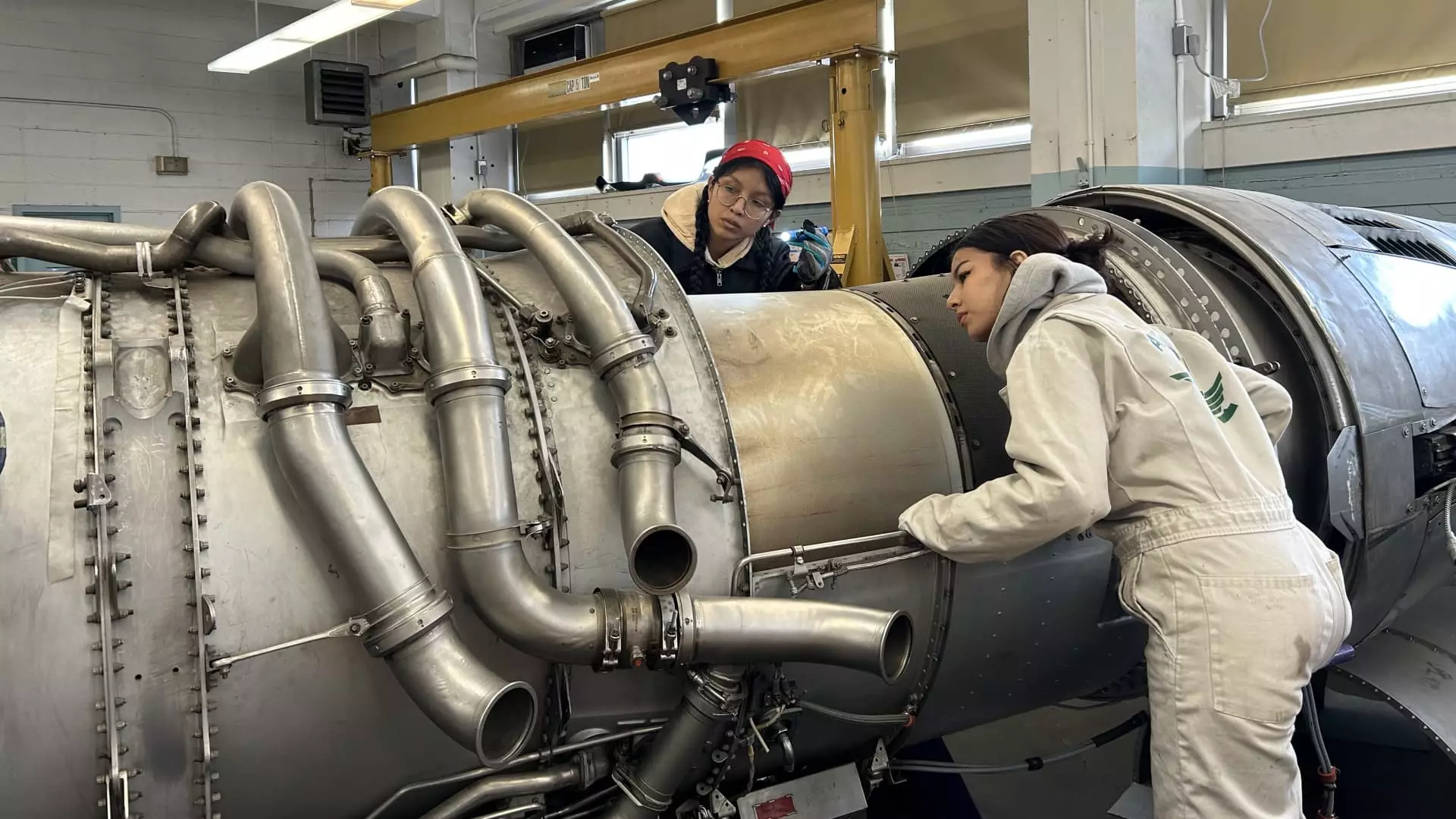The aviation industry stands at a critical juncture, as the workforce grapples with a significant generational gap that threatens its sustainability. With the average age of certified aircraft mechanics hovering around 54 and a staggering 40% over 60, it’s impossible to ignore the inevitable workforce attrition looming in the coming years. A report from the Aviation Technician Education Council and Oliver Wyman underscores the urgency of this crisis, warning of a potential shortfall of 25,000 aircraft technicians in just five years. The unfortunate irony lies in President Donald Trump’s ambition to strengthen American manufacturing. While the government pursues lofty goals, the heart of the aviation workforce beats slower with each passing year, threatening not just jobs, but national pride.
The challenge encompasses more than merely finding replacements for aging technicians; it’s about revitalizing the industry itself. There was a feigned sense of stability pre-COVID-19, as the sector was in a hiring spree, seeking young, skilled labor to enhance production. But when the pandemic struck, aircraft manufacturers and service providers found themselves forced to either downsize or offer early retirement packages to their seasoned workers. In doing so, they shattered a fragile equilibrium dependent on experienced individuals who genuinely understood the intricacies of aircraft assembly and maintenance.
The Money Trail: Are Wages and Incentives Enough?
A massive paradox exists within the industry: while wages for skilled technicians have surged, they still fall short of attracting younger prospects. Data shows that average technician salaries can rise up to $130,000 within nine years, yet many young adults are drawn to more immediately appealing opportunities. For instance, salaries have risen significantly in recent years, achieving a median of approximately $79,140. This represents an enticing figure when contrasted with the national median income of $49,500. However, many aspiring workers are still questioning the final takeaway—will wages alone suffice to rekindle their interest in a career that may seem archaic compared to the electric allure of tech start-ups?
The compensation structure serves as a double-edged sword. On one hand, it demonstrates the value being placed on skilled labor; on the other hand, it often falls flat in combating the appeal of careers that resonate with Gen Z’s values, such as innovation and a dynamic work environment. There’s an urgent need for the industry to not only offer competitive wages but to also showcase a modern, tech-savvy work environment. The shift from traditional manufacturing paradigms toward a ‘high-tech’ image is crucial to attracting a new generation of workers eager to engage with cutting-edge technologies—after all, who wouldn’t want to work with laser-guided machinery?
Building a Pathway for Future Generations
It’s evident that a systemic change is required to prevent the impending workforce shortage. Institutions like Aviation High School in Queens, New York, offer a glimmer of hope in an otherwise challenging landscape. Programs aimed at educating high schoolers to earn FAA licenses show promise and are capturing growing interest. With over 5,000 applications received recently, it’s apparent that the demand to join this field exists—it’s just waiting to be harnessed.
However, this excitement must be complemented by a collective effort from airlines and manufacturers to establish partnerships with educational institutions from an earlier age. The industry must ensure that young people are not only aware of but enthusiastic about a career in aviation. Efforts to engage with junior high students are crucial, as the earlier they discover the expansive roles available—be it aviation engineering or frontline service—the better the industry can bridge the expanding skills gap.
Moreover, cultivating interest is merely a first step; educational programs must reflect modern realities. This includes expanding Boeing, American Airlines, and other industry giants’ initiatives that focus on deploying high-tech training and hands-on experience rather than solely theoretical knowledge. Reinventing the narrative around what it means to work in aviation is crucial to reversing the current trends that leave many in the industry feeling disenfranchised.
A Call to Action: A Collective Responsibility
As the aviation sector prepares for an uncertain future, a call to action echoes louder than ever. It’s paramount that the industry and government collaborate across sectors to tackle these challenges together. The market is demanding technical savants, and they will not wait idly while solutions are crafted. The reliance on a dwindling workforce of older technicians is a surefire recipe for disaster, one that could ripple through the broader economy.
Institutions, corporations, and policy-makers must work in tandem to develop robust pathways to ensure our future aviators are adequately prepared and energized to meet the challenges ahead. The clock is ticking as we brace for what could soon become a crisis of unprecedented magnitude in the very industry that symbolized our nation’s ambition and technological prowess.

